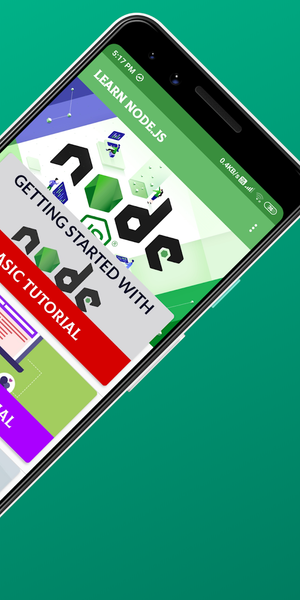- Applications
- Education
Learn Node.js
Images






Introduction
Node.js, Express, MongoDB and friends are some of the most in-demand web development skills. This course is the cumulation of everything I've learned building dozens of Node.js applications over the past five years.
Node.js is an open source Javascript runtime platform that allows Javascript code to operate outside a browser. It's known as a "javascript everywhere" paradigm in which dynamic web content is produced before being sent client side.It's a distributed development project governed by the Node.js Foundation and facilitated by the Linux Foundation's Collaborative Projects Foundation.
With a focus on modern JavaScript and real world application, Learn Node is an efficient way to add server side JavaScript to your skill-set and start building the applications you have been dreaming about.
Node.js projects produce dynamic web applications within a Javascript runtime environment and allow developers to use command line tools. The lightning pace of development requires developers to reduce latency while retaining maximum scalability. Not an easy task. Creating web servers before required each request to spawn a new thread of execution or fork a new process. While that's a sound theory, it creates a lot of overhead that you must maintain. Node.js streamlines the process by running a single-threaded event loop. Each connection triggers a Javascript callback function that can handle requests and spawn threads from a pool if necessary. These functions require significantly less computing power. It handles more callback functions with less memory than even the most significant competitors using threads, including Apache HTTP server, IIS, and ASP.Net.
Start learning Node.js with these free Node.js tutorials. Books are always your best buddies when it comes to learning any new technology like NodeJS. Read extensively about topics and then practice them arduously. Practice is the key to develop practical knowledge.
Microsoft's Introduction to Node.js gives you the tools to move beyond basic HTML to build dynamic web applications. You'll learn the basics and expand to additional modules, configuring your application using NPM registry. You'll set up a web server with Express and work with MongoDB to store the data. Microsoft's second course sets you up for a range of back end development including SQL and SQLite and deploying a web app using Azure. It covers a range of server-side functionality and includes how to provide long term support to your project.Technische Universität München's course is broader, building a range of Javascript abilities that include the Node.js library, giving you the chance to build js applications with a range of languages.
NodeJS is completely event-driven. A Node.js server consists of one thread processing one event after another. It is a single-threaded server that responds to callbacks but never blocks on the main thread.
NodeJS offers complete web development because it has the ability to support both frontend (client-side) and backend (server-side) development.
The web is the foundation for just about every field there is, so a range of tools in your toolbox gives you sought after skills for a variety of careers. Full stack developers are in high demand, and Node.js is a tool that can help you build dynamic server-side applications and opens up a range of JS uses. Whether you work in Github or you've got your eye on windows or Linux applications, Node.js is a vital tool. Now, with the open source v8 Javascript engine up and running, you can build bigger, scalable projects. Chrome's V8 Javascript Engine is the most exciting development within the library, but you'll need a handle on the foundations to get to work.
Related Applications










Users Also Installed










Similar Applications












